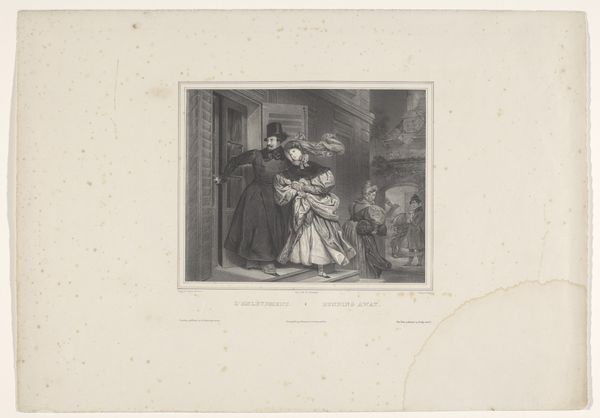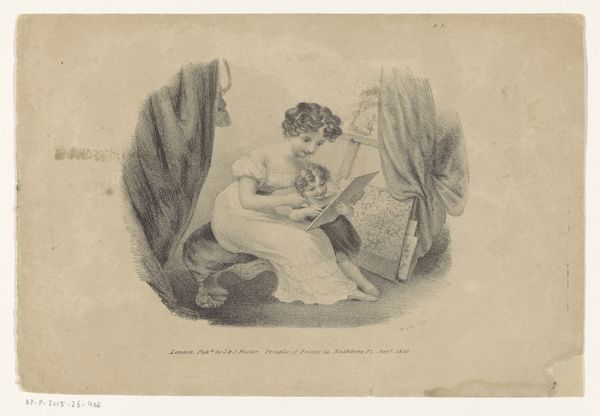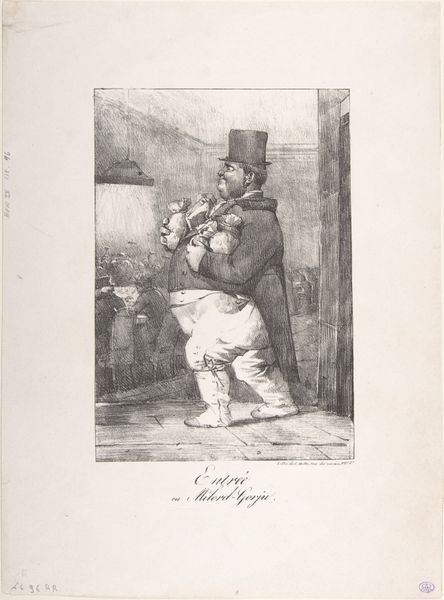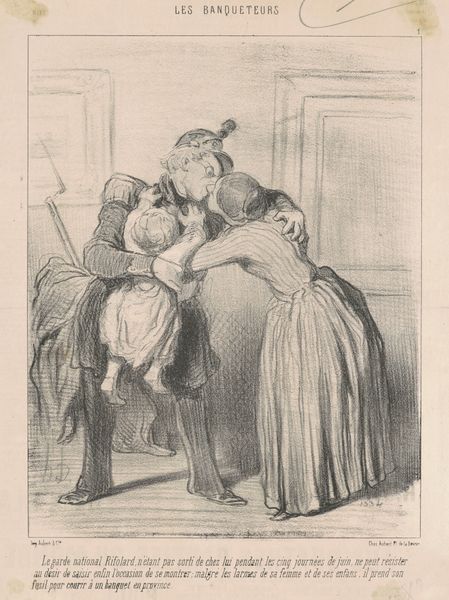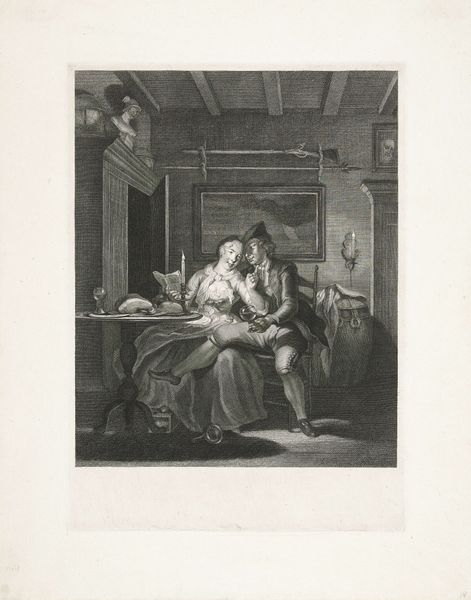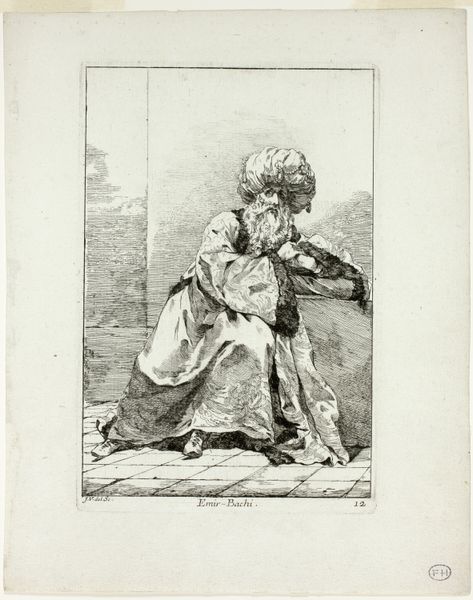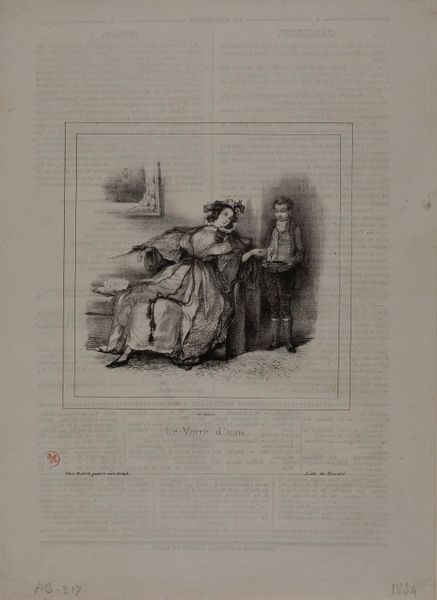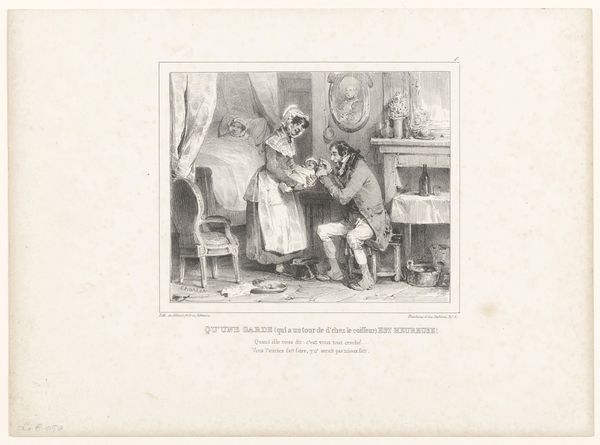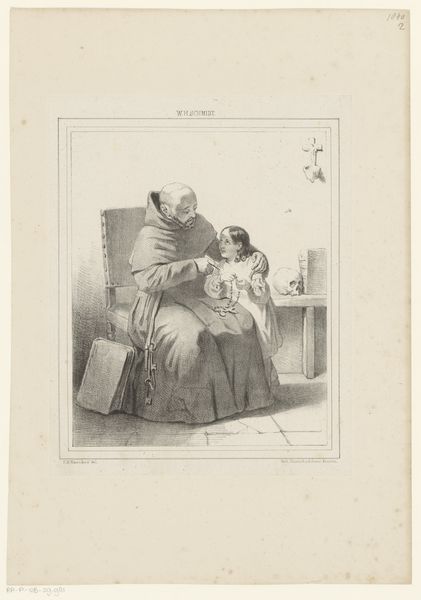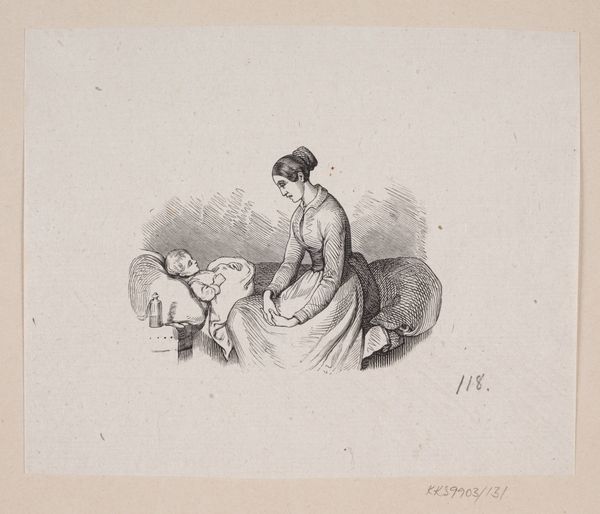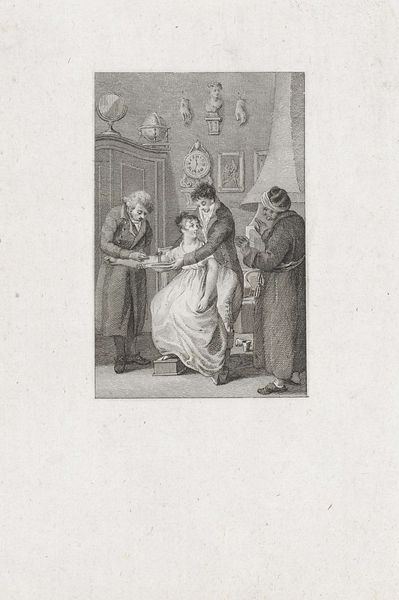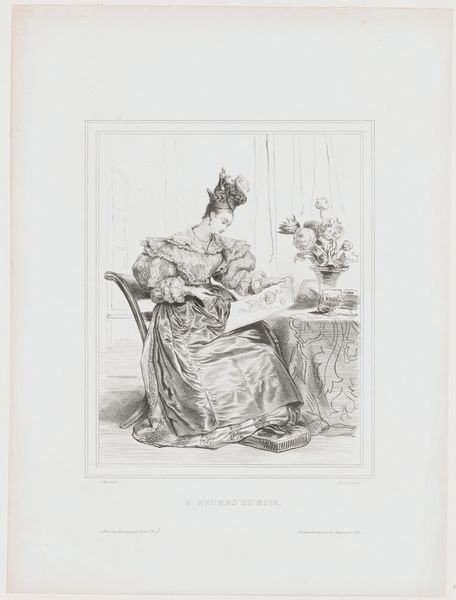
Marie Louise Charlotte Philippine Pairie, prostitute, licensed by the police 1835
0:00
0:00
drawing, lithograph, print, paper, graphite
#
portrait
#
drawing
#
lithograph
# print
#
caricature
#
charcoal drawing
#
paper
#
romanticism
#
france
#
graphite
#
genre-painting
#
graphite
#
pencil art
Dimensions: 223 × 260 mm (image); 275 × 370 mm (sheet)
Copyright: Public Domain
Curator: Let’s turn our attention to Honoré Daumier’s lithograph from 1835, "Marie Louise Charlotte Philippine Pairie, prostitute, licensed by the police," currently residing here at The Art Institute of Chicago. Editor: Woah. That's…intense. She's practically overflowing out of the frame, isn't she? And those bags of money at her feet-- I mean, she’s really taking up space, physically and metaphorically! It’s visually overwhelming. Curator: The composition is quite deliberate. Note how Daumier employs exaggerated lines to render the subject’s corpulence, a visual language common in caricature, but it also underscores societal critique through pointed representation. Editor: Right, and those almost cartoonish bags labeled "Vices" and "Nations," spilling coins...there's something almost mythical about the corruption displayed here. The title's nonchalant declaration that she's "licensed by the police" just adds a darkly humorous layer. Do you feel it's satirical of governance too? Curator: Precisely! The graphic weight created by Daumier’s technique gives symbolic presence to social criticism. Consider how her excessive form contrasts to the societal constraints she transcends, posing insightful questions of structure and privilege. Editor: Totally. The way Daumier used graphite to highlight, in particular the lace in the dress to juxtaposition opulence next to these suggestive vices and overall 'licensing' -- what you notice most here, beyond form, is this story of institutional degradation through human vice and state sponsorship. How many layers is that?! Curator: Indeed. I would posit the careful semiotic articulation of luxury adjacent to vulgarity here makes her a synecdoche for governmental and individual corruption of her period. It prompts discussion regarding morality versus pragmatism. Editor: For sure! Thinking about the social milieu of France during Daumier’s time provides essential framework. It all feels very immediate despite the distance. In summary, his audacity continues stimulating relevant discourses across the ages. Curator: Indeed!
Comments
No comments
Be the first to comment and join the conversation on the ultimate creative platform.
